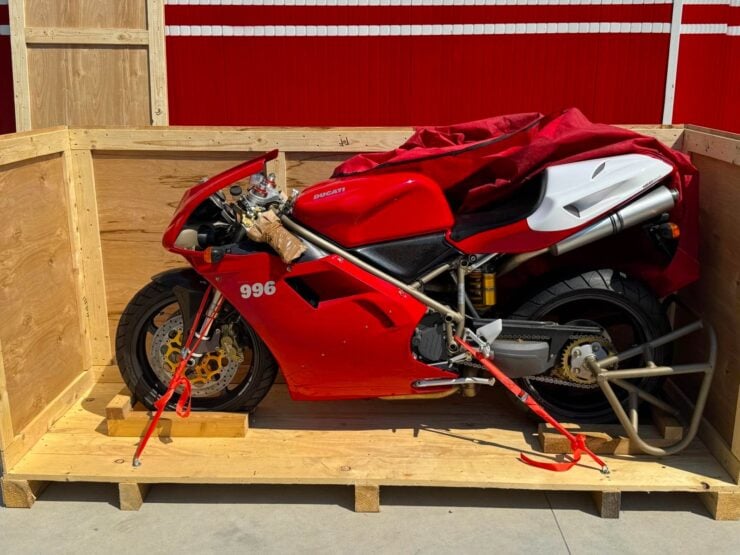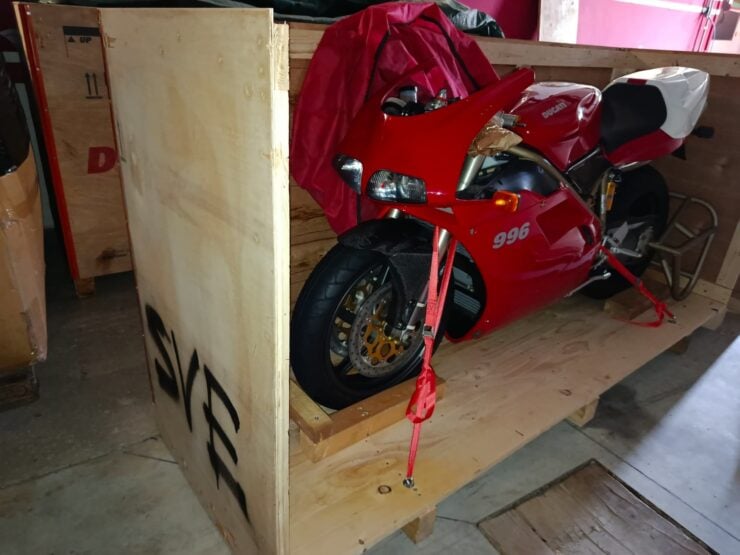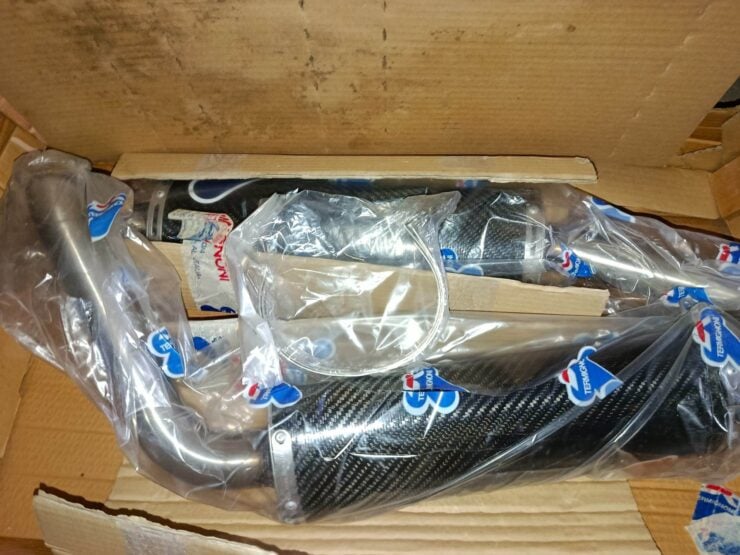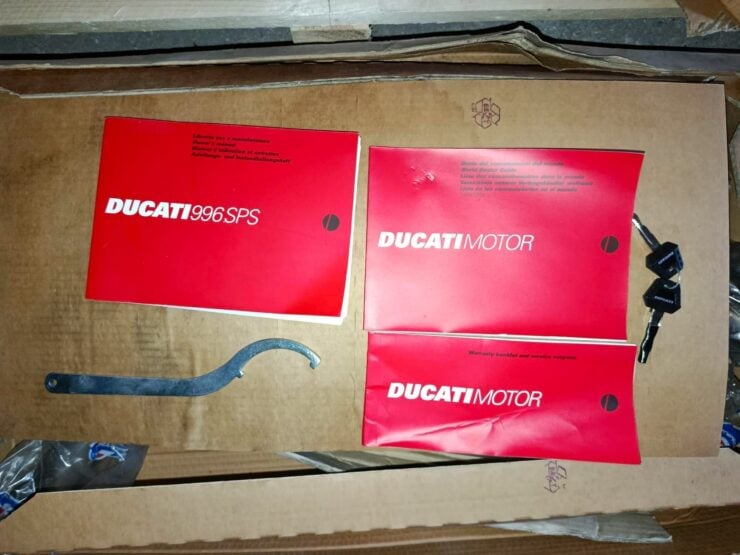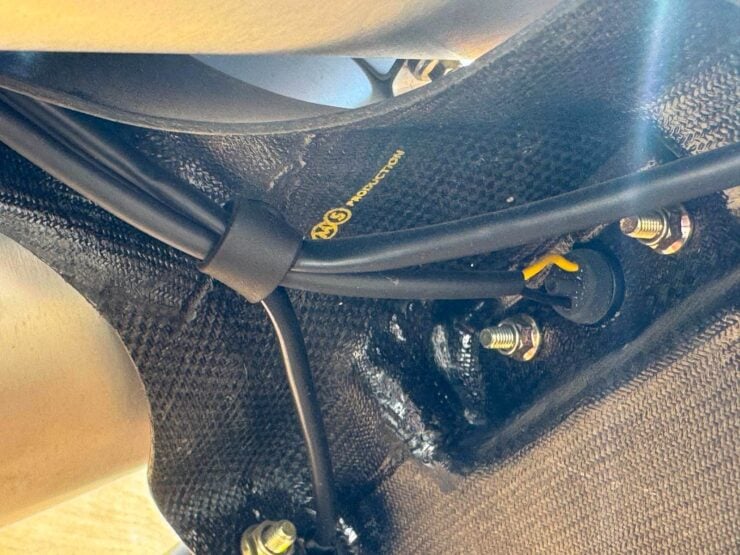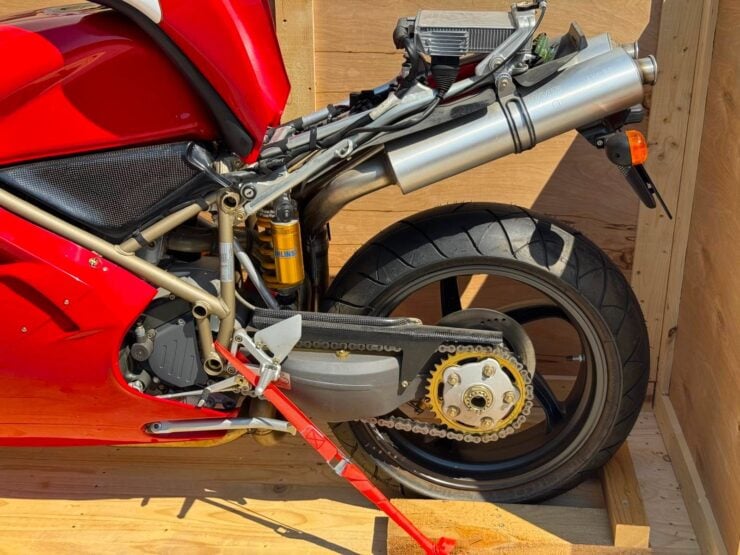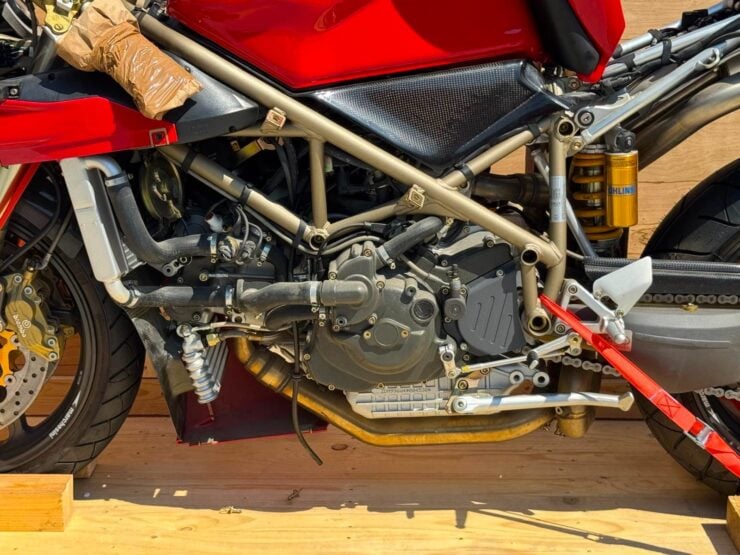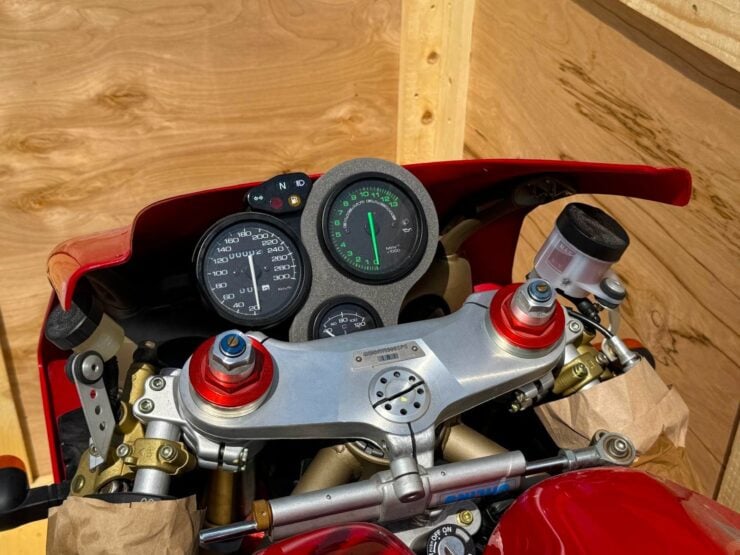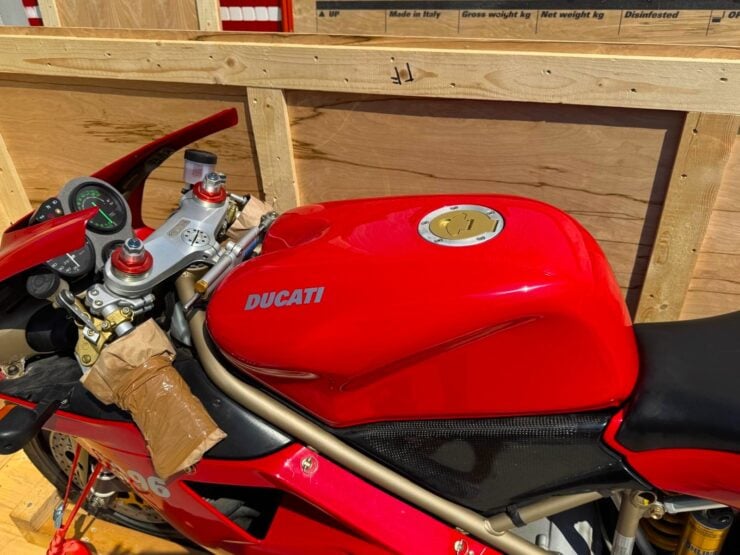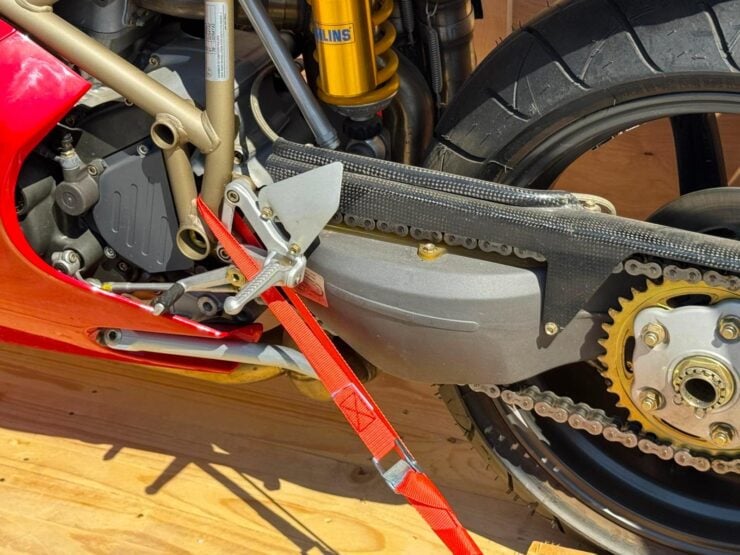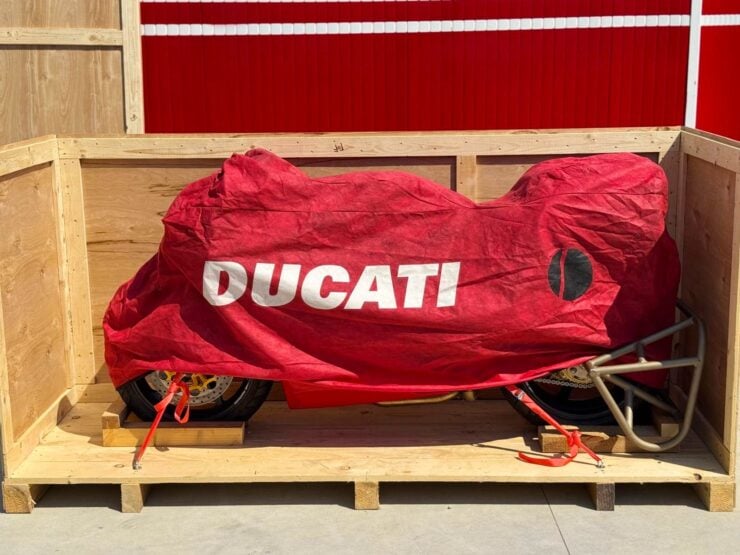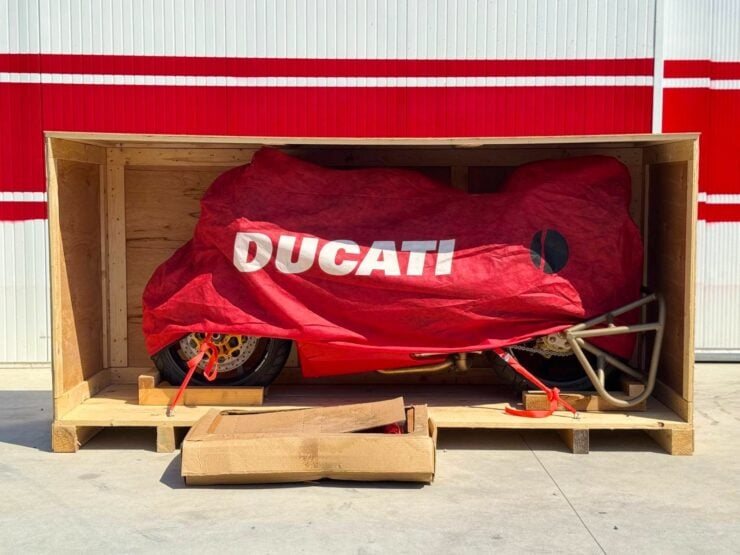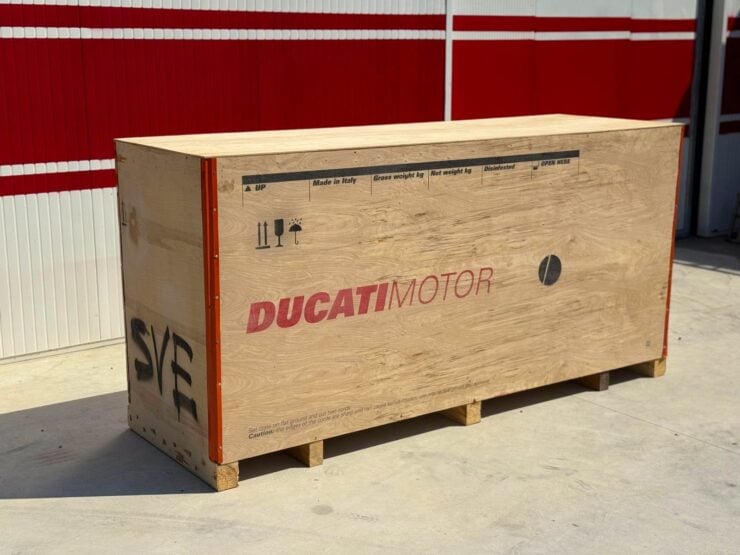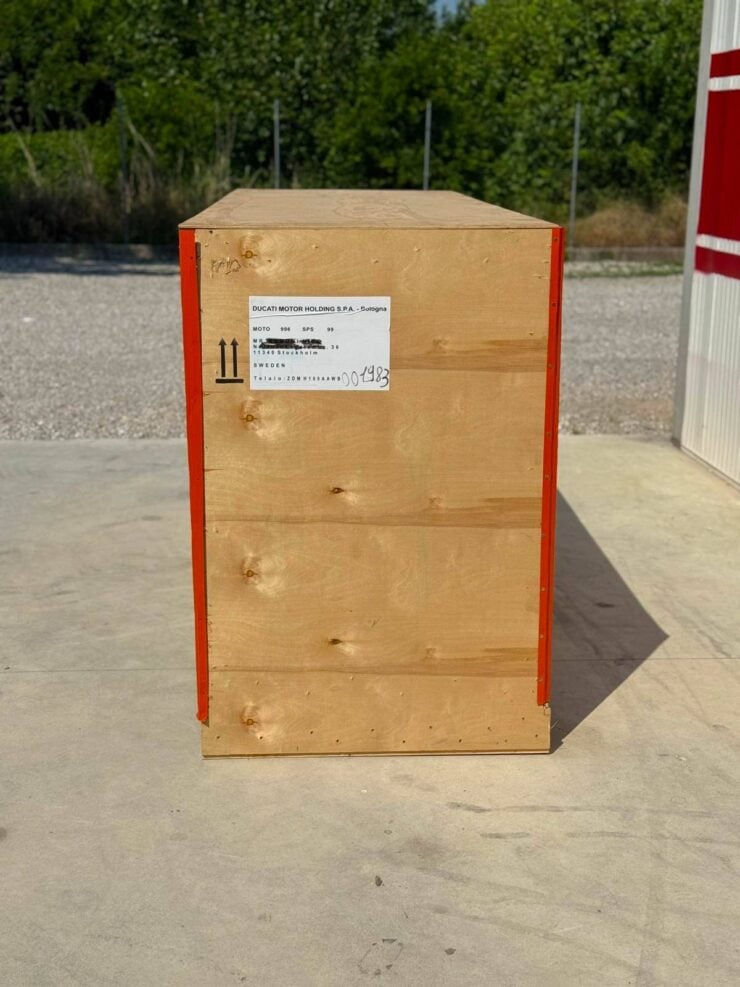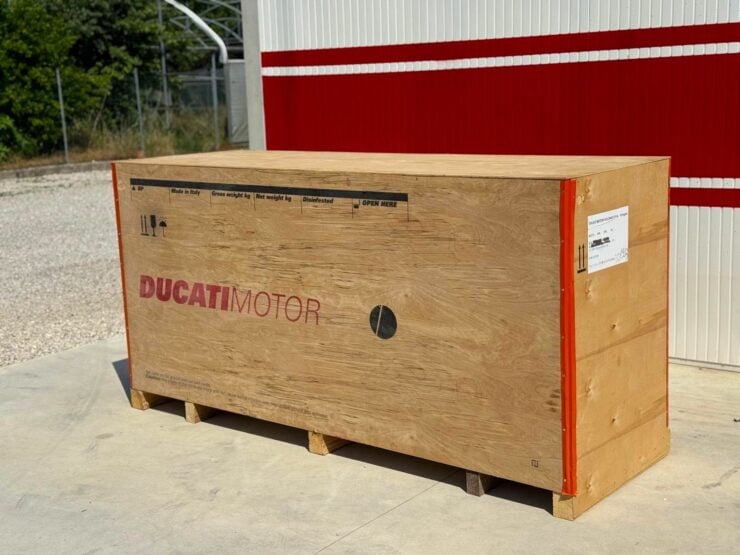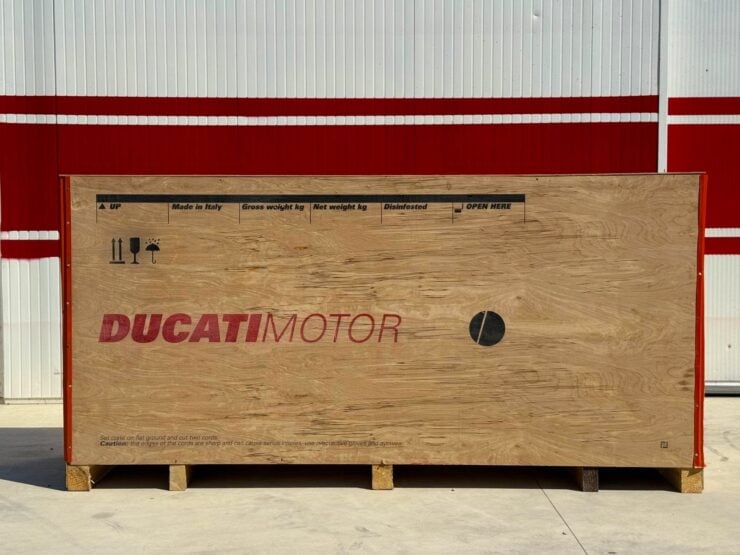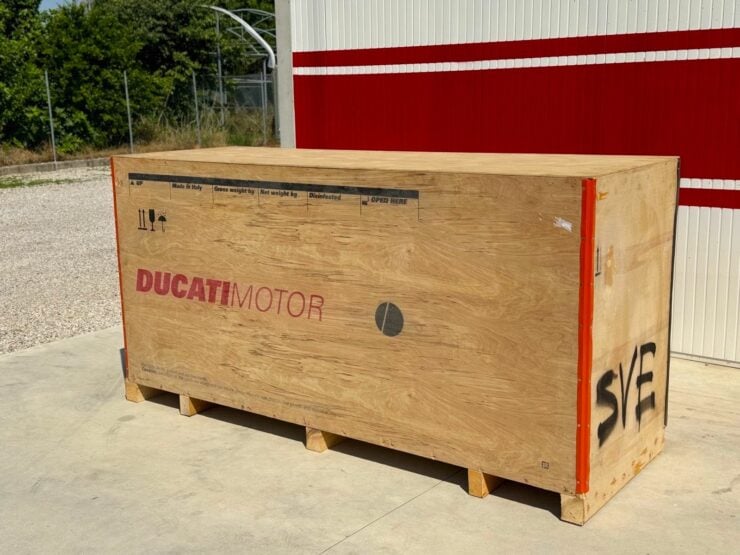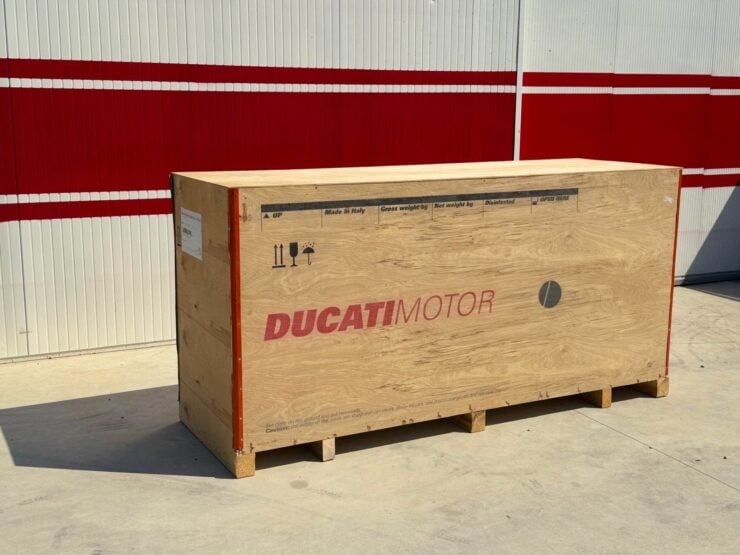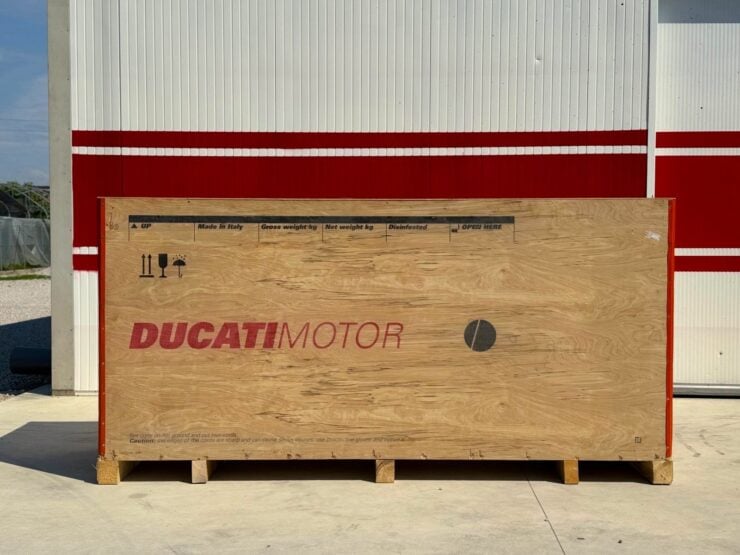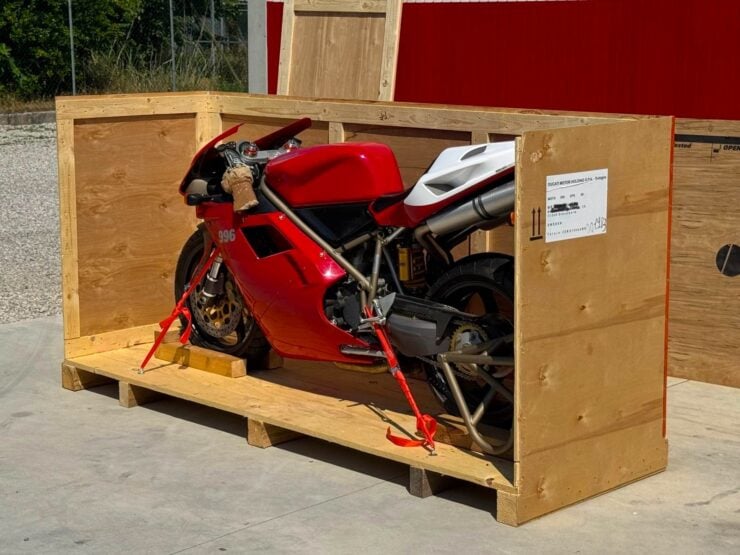This is a 1999 Ducati 996 SPS that has remained in its factory crate for 26 years, since it was brand new. This is the SPS version of the 996, a homologation special that was among the most desirable superbikes in the world when it debuted.
When it comes to 1990s superbikes, the Ducati 916 and its successor the 996 are on just about every top ten list, and for very good reason. Finding good examples that haven’t been thrashed or modified beyond recognition is becoming increasingly difficult.
Fast Facts: A Factory Crated Ducati 996 SPS
- The Ducati 996 debuted in 1999 as an evolution of the landmark 916, maintaining its iconic Tamburini styling while introducing a revised 996cc engine, sharper chassis geometry, improved cooling, and other upgrades. It was a key step in Ducati’s World Superbike dominance, blending good road manners with genuine race-ready capability.
- The 996 SPS (Sport Production Special) served as a homologation model for WSBK, featuring internal engine upgrades like titanium rods, a lighter crank, and larger valves. Power climbed to 123 to 126 bhp, with Ohlins suspension and Marchesini wheels improving handling and weight savings over the standard model.
- The 996R, released in 2001, marked the beginning of Ducati’s Testastretta engine era. With over 135 bhp and a more compact combustion chamber design, it helped close the Desmoquattro chapter while setting the stage for the Ducati 998. It was also the last 996-series model to see championship success.
- The example shown is a 1999 Ducati 996 SPS that has remained in its original factory crate for 26 years. Still showing just 2 kilometers on the odometer, it comes with original documentation and accessories. The bike is listed for sale out of Tombolo, Italy and may be subject to regional use restrictions.
History Speedrun: The Ducati 996
When Ducati unveiled the 996 in 1999, it wasn’t just a follow-up to the revered 916 model – it was a quiet revolution under much the same skin. Designed during the heyday of Ducati’s dominance in the FIM World Superbike Championship, the 996 sharpened the formula with a more powerful engine, an improved frame, and a range of variants built for both road use and racing. But to understand the 996, you have to start with the 916.
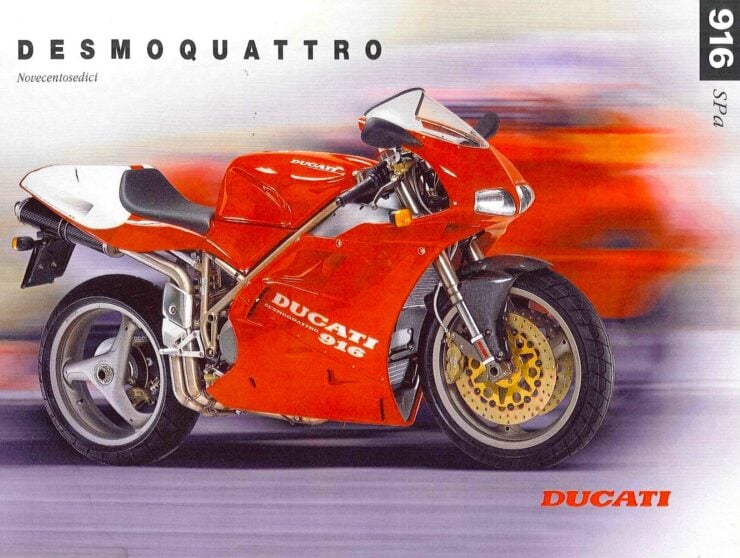

Designed by Massimo Tamburini and launched in 1994, the Ducati 916 changed the trajectory of superbike design. Its underseat exhausts, single-sided swingarm, and aggressive fairing lines became instantly iconic. Under the surface, the 916 also carried serious racing pedigree. Its 916cc Desmoquattro V-twin powered multiple WSBK titles in 1994, 1995, 1996, and 1998, and it set the architecture for nearly a decade of Ducati superbikes.
By 1998, Ducati needed to evolve the 916 platform. The 996 retained the Tamburini design but swapped the engine for a reworked 996cc version of the 916 SPS’s motor. While outwardly similar, the new unit brought an increased bore, new heads, and revised cooling.
The result of these changes was more midrange torque and smoother power delivery, key for both road riders and racers. The chassis also received subtle but effective tweaks. A steeper steering head and reinforced frame gave the 996 more stiffness and sharper handling at the limit without compromising stability.
The base 996 made approximately 112 hp and used Showa suspension front and back, Brembo brakes, and the familiar Ducati dry clutch with its distinctive rattle. Variants included the Biposto (two seat) and Monoposto (single seat), along with the higher-spec 996S and the race-bred 996 SPS homologation special.
The Ducati 996 SPS
The 996 SPS (Sport Production Special) wasn’t just a performance upgrade – it was a full homologation machine developed to allow the 996 to complete in the World Superbike Championship. Built in limited numbers, it had a significantly more aggressive engine with titanium connecting rods, larger valves, a lighter crank, and revised cam profiles. Power increased to 123 – 126 bhp in European trim, and torque rose accordingly.
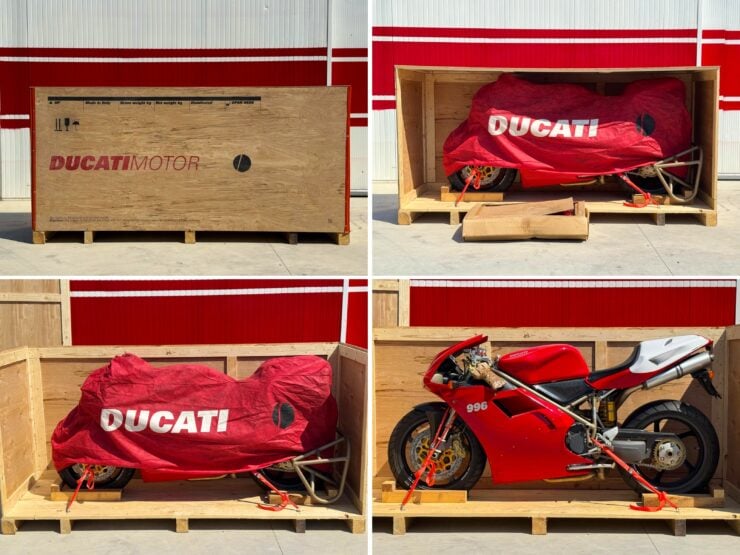


Ohlins forks and an Ohlins monoshock replaced the standard Showa units, and Marchesini wheels shaved unsprung weight compared to the standard 996 (early 1999 SPS models had Showa front forks with Ohlins rear, while 2000+ models had full Ohlins suspension).
Carbon fiber bits and a Termignoni exhaust system completed the package. US models retained the SPS chassis and suspension but used a different engine due to EPA emissions restrictions – slightly dulling performance.
In 2001, Ducati released the 996R, a further step toward the upcoming 998. The 996R introduced the new 998cc Testastretta engine – with narrower valve angles, more compact combustion chambers, and improved flow – all of which would carry into the next generation.
With over 135 bhp and full Ohlins suspension, the 996R was aimed squarely at the racetrack. It also marked the end of the Desmoquattro line, closing a chapter that began with the 851.
The 916-996 era further solidified Ducati’s reputation as a serious multi-championship-winning superbike manufacturer. The 916 won the World Superbike Championship four times in the 1990s, the 996 SPS added another win in 1999, and the 996R added one last championship trophy in 2001.
The Factory Crated Ducati 996 SPS Shown Here
The motorcycle shown here is a 1999 Ducati 996 SPS that has remained unused in its factory crate since it left the Ducati factory. It reportedly spent decades in the ownership of a Swedish collector, before being bought by the dealer in Italy who is now offering it for sale.
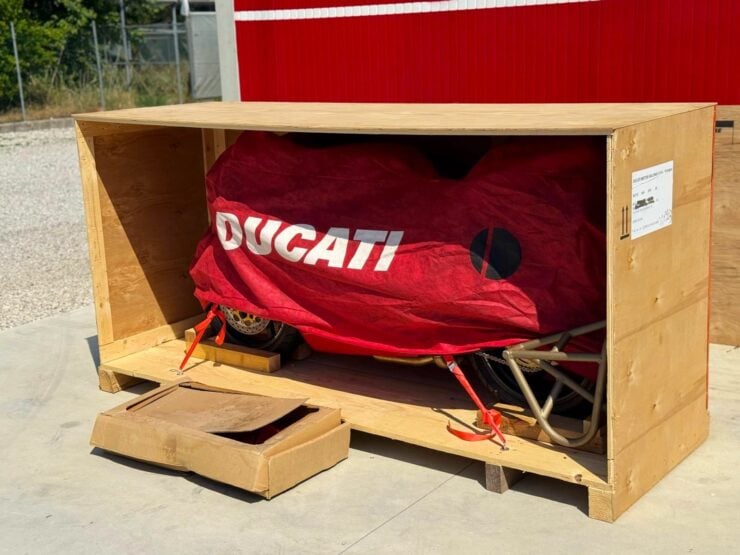


The bike is showing just 2 kilometers on the odometer with service records, spare parts, a tool kit, a bike cover, and a bill of sale. It’s listed as being only usable for off-road or display use, however these restrictions will be country-dependent, so you’ll need to check your local laws if you do want to uncrate it and use it on the road.
It’s now being offered for sale out of Tombolo, Italy and you can visit the listing here on Bring a Trailer if you’d like to read more about it or place a bid.
Images courtesy of Bring a Trailer


